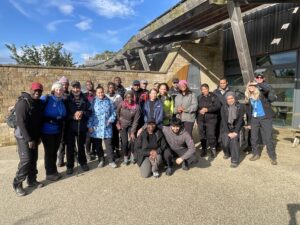
As part of this year’s Youth Hostel’s Association’s (YHA) Festival of Walking, SEM organised a residential week-end for 20 people to undertake a guided walk at Hadrian’s Wall at Northumberland National Park. This is the second time SEM has organised a visit to Northumberland National Park having organised a guided walk to Hadrian’s Wall last year due to the landscape’s Black historical links. There were Black legionnaires who helped to strengthen Hadrian’s Wall and it was where the first Black Roman Emperor Septimius Severus who had marched with his troops along the trail of the Old Roman Road at the Peak District National Park was stationed with his troops.
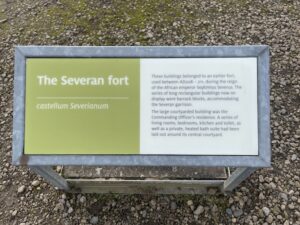
This year’s guided walk was for two reasons: to re-visit the spot where the Sycamore Tree stood at the Sycamore Gap for decades and which some people from the group visited in September 2023 only to hear two weeks later in the news that it had been destroyed; to visit the Roman Vindolanda Fort & Museum to learn about presence of Black heritage in the landscape. The rationale for doing this guided historical walk and tour of the Roman Ruins was to promote the rich historical heritage of the English landscape to Black and minoritised communities who are not aware of this history. This activity would then engender an interest for them to visit heritage sites and learn about the presence and contributions made by Black and Ethnic minorities to the English landscape.
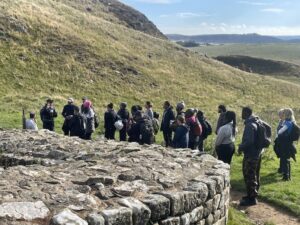
The guided historical walk along Hadrian’s Wall was led by 4 Rangers from the Northumberland National Park, while at the Roman Vindolanda a tour guide took the group around the Roman Ruins with the group later visiting the Roman Museum & Fort. Not a single person out of the group had ever visited the Roman Vindolanda, and so there was a great opportunity to experience and learn about this history and heritage as the comments below indicate:
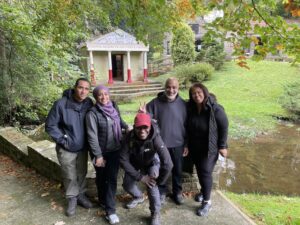
These were some of the comments from participants:
‘This field trip was incredibly enriching and educational. It was an incredible opportunity to visit these historic places and to learn about the Roman Empire. I benefitted greatly from the guided walk along Hadrian’s Wall learning about history of the wall and why it was constructed. The tour of the Roman Vindolanda Fort & Museum was beyond description. I learned so much about the Romans, their daily lives, the impact they made in the region. Visiting these ancient places gave me deeper appreciation of their legacy and enduring influence of Roman culture in English society, something people from Black & minority communities are unaware of’.
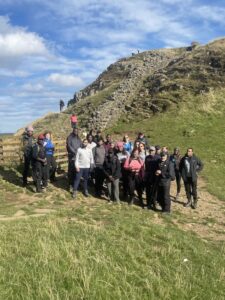
‘For me as a 40-year old Pakistani woman this field trip was a great opportunity to visit such public areas that people from our communities are either not aware of or lack the opportunity to visit and learn about the English landscape and its cultural heritage. That is because travelling to such public areas as the Roman Vindolanda Fort & Museum we from minoritised communities will not most likely go. That is because travelling to places like that we may feel unwelcome, and that alone can be intimidating for individuals such as myself as a Muslim woman wearing a hijab, because all the tour groups we saw there were all white people. Walking along Hadrian’s Wall as a World Heritage was incredibly breathtaking hearing about the history of how the Romans lived and why the wall was built as a fort.
For me, another thing is re-visiting the site where the Sycamore Gap tree once stood, and the fact that it was no longer there, after I first in September 2023 and we took a group picture under it before it was cut down was disheartening’.

‘Having the opportunity to see landscapes like the Hadrian’s Wall and walk along its trail and hear about the history is quite an experience for me as a 41- year old Black man, who though fit, but don’t really do outdoor stuff, this not something I will sit down and think about when speaking about recreational activities, but this guided historical walk along Hadrian’s Wall has completely changed my mindset. Seeing these landscapes in person its hard not to be reflective about life in general about the history of the Northumberland landscape and the role the Romans played in that landscape which we Black people are not aware of, if not for SEM organising this residential weekend and guided walk. At school in Sheffield we were not taught this history especially the Black historical heritage of the English landscape so we are not aware of this history and where these historical sites exist in order to visit and learn as we have done today’.
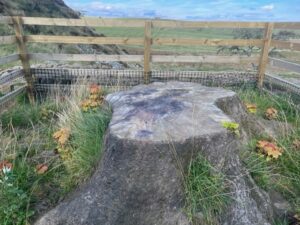
‘As a 65 year-old Black woman, prior to visiting the Roman Vindolanda Fort & Museum I didn’t know there were Black people such as the first Black Roman Empire Septimius Severus in the Northumberland landscape until the tour guide briefly mentioned about him but didn’t proceed to elaborate the role he played. However, I saw a plaque at the Roman Ruins with the writing, “The Severan Fort – Castellum Severianum – these buildings belonged to an earlier fort, used between AD208 – 211, during the reign of the African Emperor Septimius Severus”. It was only then I realised that there has been people of Black African presence in Britain since centuries but we have not been told this – what a travesty that this history is not told to Black people’.
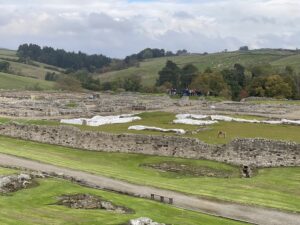
SEM’s CEO Maxwell A Ayamba, who went on the guided walk along Hadrian’s Wall and tour of the Roman Vindolanda Fort & Museum said, “it is important to promote heritage sites to groups that are historically unaware of the English heritage in order for them to learn about this rich historical cultural heritage.”
He said; ” it is important that educational institutions and heritage bodies reach out to engage groups from sections of the society that have no knowledge of English heritage as it will be only those privileged benefiting from this history and that as part of SEM’s work will continue to promote and engage minoritised communities by offering such opportunities to ensure people from minorities engage in the British countryside.”
Maxwell stressed the fact that; “the work of SEM is about re-telling the history of the English landscape, weaving cultural narratives into places and spaces to develop new routes to meaning and connection to the outdoors.”